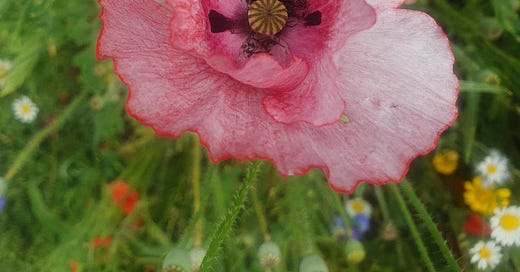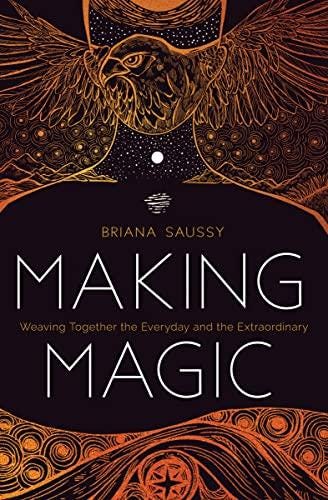As I am preparing to meet our coven for a full moon herb gathering, my thoughts turn to the topic of consent. If we are truly approaching magic in an animistic fashion then what consideration should we be giving to the plants we are using in our magical work?
My approach to animism is largely shaped by the work of Aidan Wachter. Having picked up his book ‘Six Ways’ back in 2018, a whole new world of ‘relationship’ opened up to me and I still centre my practice around his style of allyship.
Wachter defines Animism in two ways:
“A belief that spirits inhabit or indwell some or all classes of natural objects, locations and phenomena.
A belief that an immaterial force (or forces) animates the universe.”
This view places us within a spirit ecosystem, where everything - those classically ‘living’ things like animals, as well as plants and funghi, rocks and bodies of water, even the man-made chair we sit on and the very ground we walk on, can be considered to have a sentience of some kind.
This prompts the magician to consider their relationship with that land, those plants, those stones in a wholly different way, especially when it comes to consumption or use of any kind.
While part of a Wiccan coven, I personally consider myself more a practitioner of nature magic (I’d argue there isn’t any other kind but thats a whole other conversation). Wicca is a great place to start with looking at this however, so start there I will.
As Janet and Stewart Farrar discuss, Wicca is a natural religion and its witches know that they are a part of this great spiritual ecosystem. Forging and maintaining connections with the land is incredibly useful if one is focussed on performing effective magic. This goes further than observing the seasons via the wheel of the year - it is really about building deep and enriching relationships with those other species around you. We are not and cannot be separate from nature - no matter how hard we try to enclose ourselves in our little hermetically sealed concrete homes and paved over gardens - we are constantly sharing our space with the other. There is nothing on our planet that is not from nature - even plastic is formed from petroleum, a product mined from the earth.
As in all facets of life, building relationships involves communication, but how do we learn to speak and to understand the language of nature? There isn’t a Duolingo course for communicating with trees or your local river. You have to feel your way through - this is a multisensory process.
In her excellent ‘Making Magic’, Brianna Saussy outlines an exercise that helps you develop the faculties to speak to nature. She suggests to go to your kitchen and pick one area - your spice drawer or refrigerator, and go through the contents. You will find that certain ingredients stand out to you - they seem to vibrate with potency, you might even find they have personality.
You can then take this practice outside. If you have the luxury of a garden start there. For those of us not so blessed there is a world of plants available in even the most urban landscape, and they are just waiting to be really seen and conversed with. Touch a leaf gently, speak to the plant, it is surprising how often you’ll sense something coming back. With each plant you meet, take the time to read up on it - learn its proper name and folk names and introduce yourself in return, it is only polite.
And of course, now we are talking about manners, we can return to the real subject of this post, consent and intent. If we take it as a given that all things have some sort of spirit / sentience then we should, out of sheer politeness if nothing else, be asking their permission to use them. This applies especially to foraging, we are picking the flowers, leaves, roots or fruits that living plants have worked hard to produce.
I’ll post more about that next week - watch this space!







